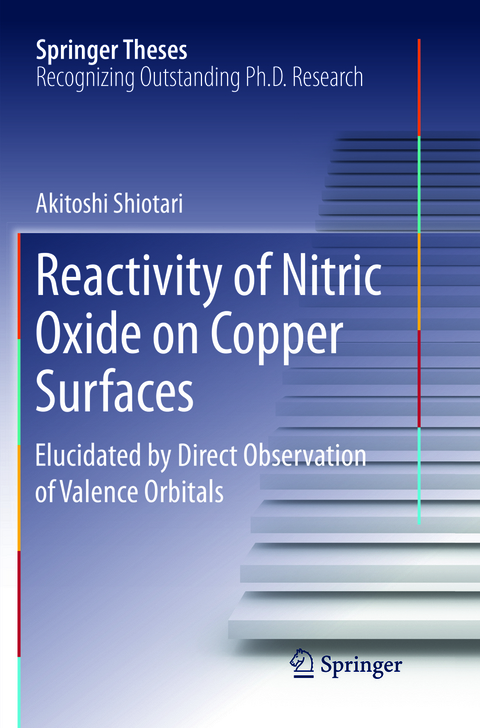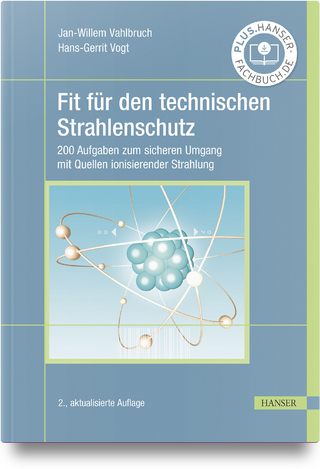
Reactivity of Nitric Oxide on Copper Surfaces
Elucidated by Direct Observation of Valence Orbitals
Seiten
2018
|
Softcover reprint of the original 1st ed. 2017
Springer Verlag, Singapore
9789811351747 (ISBN)
Springer Verlag, Singapore
9789811351747 (ISBN)
This book provides microscopic insights into chemical properties of NO on metal surfaces. Exploiting those techniques, the author chemically identified individual NO-related species on the surfaces and discovered new reaction processes for NO reduction, which provides microscopic insights into the catalytic mechanisms.
This book provides microscopic insights into chemical properties of NO on metal surfaces. NO/metal systems have been studied intensively to understand heterogeneous catalysis to detox exhaust NOx gas. The identification and componential analysis of various and mixed chemical species of NO adsorbed onto the surfaces have been significant challenges faced by conventional experimental techniques, such as vibrational spectroscopies. The author investigated "individual" NO molecules on Cu surfaces using low-temperature scanning tunneling microscopy (STM). STM not only provides information on the geometric, electronic, and vibrational properties at the single-molecule level; it is also able to manipulate molecules on surfaces to induce chemical reaction. Exploiting those techniques, the author chemically identified individual NO-related species on the surfaces and discovered new reaction processes for NO reduction, which provides microscopic insights into the catalytic mechanisms. The authoralso visualized wave functions of electrons in a valence orbital of NO and demonstrated that the wave functions are modified by the formation of covalent bonding or hydrogen bonding. This is, namely, "the visualization of quantum mechanics in real space," which is certainly worth reading. Furthermore, the book demonstrates that direct observation of valence orbitals helps to elucidate the reactivity of molecules adsorbed onto surfaces. This innovative approach to studying molecular properties will contribute to further development of STM and its related methods.
This book provides microscopic insights into chemical properties of NO on metal surfaces. NO/metal systems have been studied intensively to understand heterogeneous catalysis to detox exhaust NOx gas. The identification and componential analysis of various and mixed chemical species of NO adsorbed onto the surfaces have been significant challenges faced by conventional experimental techniques, such as vibrational spectroscopies. The author investigated "individual" NO molecules on Cu surfaces using low-temperature scanning tunneling microscopy (STM). STM not only provides information on the geometric, electronic, and vibrational properties at the single-molecule level; it is also able to manipulate molecules on surfaces to induce chemical reaction. Exploiting those techniques, the author chemically identified individual NO-related species on the surfaces and discovered new reaction processes for NO reduction, which provides microscopic insights into the catalytic mechanisms. The authoralso visualized wave functions of electrons in a valence orbital of NO and demonstrated that the wave functions are modified by the formation of covalent bonding or hydrogen bonding. This is, namely, "the visualization of quantum mechanics in real space," which is certainly worth reading. Furthermore, the book demonstrates that direct observation of valence orbitals helps to elucidate the reactivity of molecules adsorbed onto surfaces. This innovative approach to studying molecular properties will contribute to further development of STM and its related methods.
Introduction.- Principles and methods.- Visualization of covalent bonding between NO molecules on Cu(110).- NO reduction by co-adsorbed water molecules on Cu(110).- Thermal and electron-induced configuration changes of NO on Cu(110).- Valence orbitals of high symmetry NO on Cu(001).- Symmetry correlation between molecular vibrations and valence orbitals: NO/Cu(110) and NO/Cu(001).- Formation of unique trimer of NO on Cu(111).- Conclusions.- Appendix: Analysis of tunneling current modified by vibrational excitations.
| Erscheinungsdatum | 04.03.2022 |
|---|---|
| Reihe/Serie | Springer Theses |
| Zusatzinfo | 61 Illustrations, color; 5 Illustrations, black and white; XIII, 129 p. 66 illus., 61 illus. in color. |
| Verlagsort | Singapore |
| Sprache | englisch |
| Maße | 155 x 235 mm |
| Themenwelt | Naturwissenschaften ► Chemie ► Physikalische Chemie |
| Naturwissenschaften ► Physik / Astronomie ► Festkörperphysik | |
| Technik | |
| Schlagworte | chemical reaction on copper surfaces • low-temperature scanning tunneling microscopy • Single molecular chemistry • surface reaction of nitric oxide • visualization of molecular orbitals |
| ISBN-13 | 9789811351747 / 9789811351747 |
| Zustand | Neuware |
| Informationen gemäß Produktsicherheitsverordnung (GPSR) | |
| Haben Sie eine Frage zum Produkt? |
Mehr entdecken
aus dem Bereich
aus dem Bereich
Quantenmechanik | Spektroskopie | Statistische Thermodynamik
Buch | Softcover (2024)
De Gruyter (Verlag)
CHF 83,90
200 Aufgaben zum sicheren Umgang mit Quellen ionisierender Strahlung
Buch | Hardcover (2023)
Hanser, Carl (Verlag)
CHF 48,95


